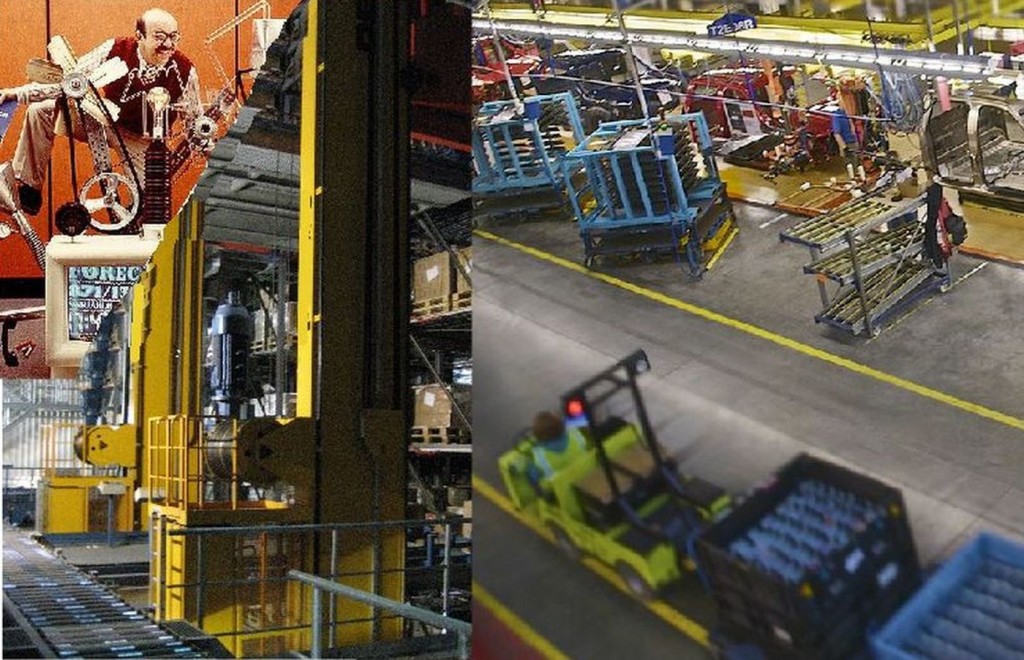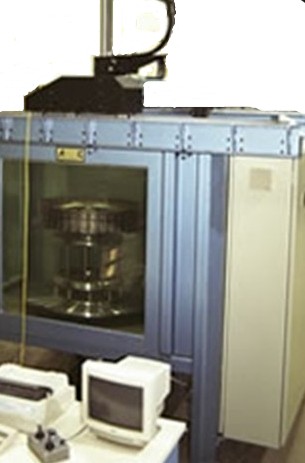
Tesla Gigafactory by Steve Junvetson contrasted against the orginal Ford Highland Park Assembly plant by Andrew Jameson
Lean is a continuously evolving target driven by the underlying business cost factors. As observers, we see the evolving result. The original Ford assembly plant was a 6 story building. I suspect this was optimum at the time because other business cost issues, like heating and central utilities, overrode the difficultly of lifting materials to the upper floor against the force of gravity. In a 6 story plant the elevators were always the bottleneck. They had to work against the force of gravity. Given this history, it is not surprising that we have evolved to a plant layout, like the Tesla Gigafactory, where everything is at the same elevation.
In the 70’s the auto industry annually made 2 million identical Chevrolet Caprices. This necessitated the movement of a whole lot of material. Engineers can rise to the task. Modern marvels of mechanical movement were invented to continuously shuffle identical loads. Comics such as Rube Goldberg poked fun at the result.

Tuggers pulling goods on trailers are displacing transport using lift truck and conveyor systems (by Mdomseif) which look a tiny bit Rube Goldberg (by Phil Mankar) to the current eye
Less than efficient results occur when the engineering task is to stuff more equipment into a limited space. The saving grace in the 70’s was the stability of the market demand. It was stable enough to recover investments in highly dedicated material moving equipment. Energy was cheap, so no one was concerned about the energy wasted fighting gravity using lift trucks and automated retrieval systems. Many of today’s companies have found it more cost efficient to transport goods without changing their elevation. Today we see tuggers and burden carriers, which do not fight gravity by raising and lowering loads, capturing market share by displacing lift trucks. The general public is more concerned about wasting energy and generating extra greenhouse gasses. The cost drivers are always evolving. We may switch back to lift trucks in the future if we can achieve better than a 25% regeneration of lifting energy. Recovery of lifting energy only occurs in a tiny portion of the transport equipment currently in use. Gravity is always weighing us down.
Equipment also benefits when gravity is considered in the design. In my work history I was involved with creating the concept for a machine for ultrasonically testing jet engine blades for cracks. This testing occurs every 1000 hours of jet engine operation. Using the same ultrasound used for pregnancy imaging, a probe is CNC transported around the blades in a tank of water. The original testing machines were behemoths. Most of all they were excessively tall. This resulted in the actual blades being tested above the vision level of the operator. New Automation took over the business by implementing my equipment concepts which absolutely minimized the amount of vertical motion that occurred.
Gravity is a relentless adversary. The best manufacturing processes occur when we can minimize the fight with gravity. Horizontal motion is more efficient than vertical motion.

